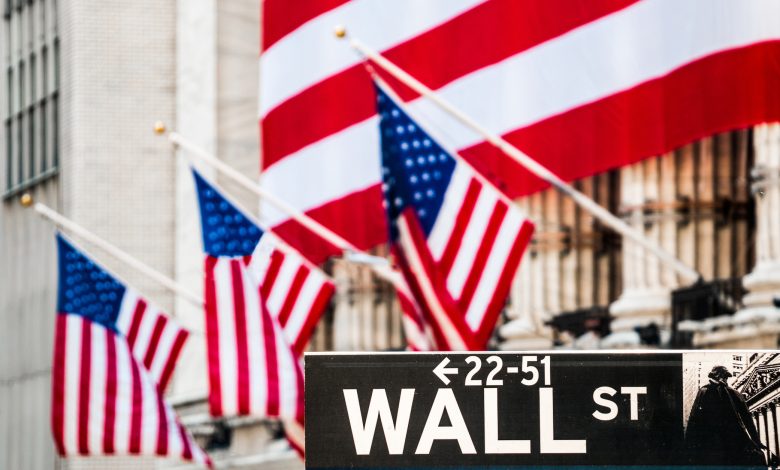3 Historically Cheap Dow Stocks to Buy Hand Over Fist in October

[ad_1]
For the past 127 years, the iconic Dow Jones Industrial Average (^DJI 0.39%) has been a widely followed barometer of Wall Street’s health. What began in 1896 as a 12-stock index dominated by industrial companies has evolved into a 30-component index containing generally profitable, diverse, multinational businesses.
However, the outlook for the 30 individual companies in the Dow Jones varies greatly. With the ageless index having pulled back from its 2023 high, a handful of its components have moved to historically cheap valuations. For investors with a long-term mindset, it provides the perfect opportunity to pounce.

Image source: Getty Images.
Historically cheap Dow stock No. 1 to buy hand over fist in October: Johnson & Johnson
The first Dow Jones stock that makes for a no-brainer buy this month is healthcare conglomerate Johnson & Johnson (JNJ 0.12%), commonly referred to as J&J. The company’s forward price-to-earnings (P/E) ratio of 15 marks a low point from where shares have ended in each of the past 10 years.
The biggest overhang for J&J is ongoing litigation concerning its now-discontinued talcum-based baby powder. Approximately 100,000 suits allege that the powder causes cancer. While not admitting guilt, the company has tried to settle this litigation in court on two occasions, only to have bankruptcy judges deny its strategy. Until these cases are resolved, there will be some degree of uncertainty attached to J&J’s stock.
On the other hand, Johnson & Johnson is well positioned to deal with whatever the final settlement might be. It’s one of only two publicly traded companies to bear the highest credit rating (AAA) from Standard & Poor’s, a division of S&P Global. This rating implies that S&P has the utmost confidence in J&J’s ability to service and repay its outstanding debts.
A big reason Johnson & Johnson delivered more than 35 years of annual adjusted operating earnings growth (which was only disrupted by the pandemic) is its revenue mix. It’s been steadily shifting more of its net sales to pharmaceuticals, which generate higher margins and faster growth than medical devices. On the flip side, J&J can still lean on medical devices as the global population ages and access to medical care improves.
Management also deserves credit for its long-term success. Since its founding in 1886, the company has had just eight CEOs. Continuity in key leadership positions has ensured that strategic growth initiatives are being properly implemented.
Lastly, don’t overlook the importance of healthcare being an exceptionally defensive sector. Demand for prescription drugs, medical devices, and healthcare services doesn’t just stop because the U.S. economy or stock market hits a rough patch. Since drugs, devices, and healthcare services are effectively necessities, Johnson & Johnson enjoys highly predictable operating cash flow.
Historically cheap Dow stock No. 2 to buy hand over fist in October: Walgreens Boots Alliance
A second Dow stock that’s historically cheap and begging to be bought in October is pharmacy chain Walgreens Boots Alliance (WBA -1.15%). One of Wall Street’s most-hated ultra-high-yield stocks (Walgreens has a nearly 9% yield) has a forward P/E ratio of 6, by far its cheapest valuation in at least a decade, if not well beyond.
As I pointed out earlier this week, Walgreens isn’t without its flaws. Consumer foot traffic and spending trends are down, competition in the online pharmacy space is increasing, and the company’s CEO since March 2021, Rosalind Brewer, stepped down about five weeks ago. Although brand-name healthcare stocks don’t turn things around on a dime, the strategic plan is already in place to create value for long-term investors in the years to come.
The flagship change being implemented by Walgreens is a shift to healthcare services. Walgreens and VillageMD (the chain owns a majority stake in VillageMD) have opened more than 200 full-service health clinics inside Walgreens’ stores. Whereas most competing health clinics can only handle vaccinations or treat a sniffle, VillageMD’s clinics are physician-staffed, full-service clinics, which should draw repeat customers at the grassroots level in major U.S. markets.
Walgreens has also completely revamped its supply chain and invested heavily in improving its direct-to-consumer experience. Despite relying heavily on brick-and-mortar sales, the company understands the importance of convenience. Investing in its online platform should provide a sustained lift to the company’s organic growth rate.
We’re witnessing a reasonable amount of cost-cutting, too, which can provide a further lift to the company’s operating margin. Management is targeting $4.1 billion in aggregate annual cost savings, and it sold its wholesale pharmacy business to Cencora (the company formerly known as AmerisourceBergen) for $6.5 billion, including cash and stock. This transaction improved Walgreens’ financial flexibility by helping it reduce some of its long-term debt.
Although consumer spending could remain challenged through the first half of 2024, the expected hire of a tenured CEO with a background in healthcare, coupled with the company’s ongoing digitization efforts and healthcare-services transformation, makes its stock a phenomenal buy.

Image source: Getty Images.
Historically cheap Dow stock No. 3 to buy hand over fist in October: Verizon Communications
The third historically cheap Dow stock you can confidently buy hand over fist in October is telecom Verizon Communications (VZ -1.38%). Its forward P/E of 6.7 is also the lowest it’s been in at least a decade, and well below its five-year average of 10.6.
Verizon’s shares have been practically halved since the end of November 2020 due to a combination of slower growth prospects, rising interest rates, and — more recently — litigation concerns.
That last one has to do with a report in The Wall Street Journal about legacy telecom companies’ use of lead-clad cables. The cost to replace the cables could be sizable. Meanwhile, higher interest rates aren’t usually good news for businesses like Verizon, which rely heavily on debt to finance major acquisitions and projects.
Though these are real concerns, they’re more than baked into the stock after a nearly 50% decline. For instance, the Journal report shouldn’t have any immediate impact on Verizon’s operations or balance sheet. If the company were to ever have any financial liability tied to its use of lead-sheathed cables, it would be determined by the U.S. court system, and that typically takes years.
What’s far more important for investors is to focus on what Verizon can control. For example, upgrading its network to handle 5G download speeds is leading to two well-defined catalysts. First, consumers are upgrading their wireless devices to take advantage of faster download speeds, which is increasing data consumption. Data is the single biggest margin driver for Verizon’s wireless segment.
Second, 5G download speeds are helping the company land more broadband subscribers. The June-ended quarter marked the third consecutive quarter in which the company added at least 400,000 net broadband customers.
Telecom services border on being a necessity, and sustained low churn rates suggest consumers would be unwilling to give up their smartphones, wireless service, or internet access during a U.S. recession or other adverse economic event. For Verizon, it means very predictable operating cash flow in any economy. As for shareholders, it ensures that the dividend’s 8.4% yield is sustainable.
[ad_2]




